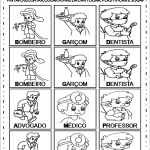would like to receive geography activities for 6th, 7th, 8th and 9th grade inclusion students
American psychiatrist William Glasser (1925-2013) applied his theory of choice to education. According to this theory, the teacher is a guide for the student and not a boss. William Glasser's Pyramid of Learning.

Glasser explains that you shouldn't just work with memorization, because most students simply forget about concepts after class. Instead, the psychiatrist suggests that students learn effectively from you by doing .
Furthermore, Glasser also explains the degree of learning according to the technique used.
This is William Glasser's learning pyramid:
According to theory we learn:
10% when we read;
20% when we listen;
30% when we observe;
50% when we see and hear;
70% when we argue with others;
80% when we do;
95% when we teach others.
William Glasser's theory has been widely disseminated and applied to teachers and pedagogues around the world. one of the many existing theories of education, and one of the most interesting, as it demonstrates that teaching is learn!
“A good education is one in which the teacher asks his students to think and dedicate themselves to promoting a dialogue to promote the understanding and growth of students” (William Glasser)
According to William Glasser's pyramid, we learn and assimilate 10% when we read the proposed content and 20% when we heard: that is, traditional teaching methods and those schools that still insist on them must be rethought. According to the researcher, it is the least effective practice to bring positive results to the student.
When we observe, we can assimilate about 30% of that matter, and when we see and hear, 50%. This percentage increases (about 70%) when we debate.
For this reason, it is essential to encourage discussion forums focused on a certain subject, arousing the curiosity and critical spirit of those who participate. When debating, the creative process is stimulated and there is the construction of feedbacks, favoring the critical side of those who participate.

When trying out the content presented, learning is even more effective: assimilation reaches 80%. For this to happen efficiently, you must really get your hands dirty and promote the interaction of theory with practice. The idea is not to focus on robust formulas and models, but to experiment and make processes more flexible.
The same problem, when you actually exercise, can have different solutions and outputs that, if they were just focused on theory, they might never appear or be stimulated.
Learning reaches the top when we teach each other what has been learned: 95%. Here is the real difference, teaching so that this content is effectively assimilated. The ideal is to create contexts so that students can teach each other and promote experiments, putting theory into practice in another way: passing on learning.
Did you like it? Share this post on your social network
 2 CLASS PLAN SPACE NOTION EARLY CHILDHOOD EDUCATION
2 CLASS PLAN SPACE NOTION EARLY CHILDHOOD EDUCATION
 Activities on Professions for Early Childhood Education
Activities on Professions for Early Childhood Education
 Welcome Poster Tips With Frozen Theme
Welcome Poster Tips With Frozen Theme
 PLAY TO CALM THE CHILDREN
PLAY TO CALM THE CHILDREN
 4 Mathematics Book for Elementary School in PDF – Download
4 Mathematics Book for Elementary School in PDF – Download
 OWLS COLORING DRAWINGS
OWLS COLORING DRAWINGS
would like to receive geography activities for 6th, 7th, 8th and 9th grade inclusion students
This site uses Akismet to reduce spam. Learn how your comment data is processed.